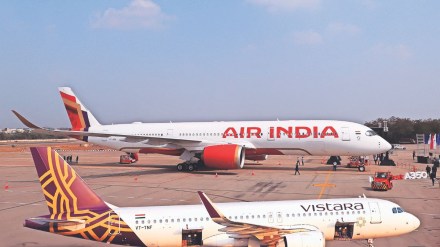When Air India (AI) chief executive and managing director Campbell Wilson said recently that the AI management was committed to making the new Air India “at least as good as Vistara and, over time, even better”, it was a tacit acknowledgement of the tremendous brand equity the nine-year-old airline has built with its efficiency, punctuality and the overall brand experience. In other words, the integration of Air India and Vistara, expected to come through by the end of the year, isn’t going to be a cakewalk.
Air India’s own brand reputation has been a mixed bag in part due to a change in ownership over the years — the airline was launched by JRD Tata in 1932 before being nationalised in 1953. To revitalise the brand image the Tata group has brought in younger cabin crew, better service levels and overhauled operations and technology across the board. But Air India is not exactly Vistara, say brand experts. “Vistara gives you a sense of efficiency through its check in process, punctuality, in-flight experience, and technology innovations,” says Naresh Gupta, co-founder & CSO, Bang in The Middle. “All that gives Vistara a premium feel and experience, and if Air India can borrow that and make it its own, it will benefit hugely.”
Once considered a benchmark in aviation that prompted Singapore’s founding statesman Lee Kuan Yew to use the airline as a blueprint for launching the city-state’s own flag carrier in the early 1970s, the Tatas are now betting billions of dollars to revive Air India’s reputation. The merger is intended to help the group achieve this objective. The group undertook a revamp of the Air India brand last year, incorporating the purple and gold colours of Vistara along with Air India’s red colour in the new logo. The idea was to integrate Vistara wherever possible into the merged entity, starting with
the logo.
CEO & MD Wilson indicated as much in recent comments about the merger: “A lot of the things that we are doing are modelled on what Vistara does, but we will eventually be collapsing the two. We are clear that Vistara will become Air India in the long run.”
Wilson also added that the integration will take time. “Behind-the-scenes planning is underway. The regulatory and legal approvals are in process. The customer-facing elements including the brand will take some time to change and we are not rushing. It will probably be completed sometime next year,” he said.
Even while the curtains fall on brand Vistara by the year end, experts say that integrating the two cultures will take time. “Air India and Vistara are completely different airlines and stand at opposite ends of the spectrum,” says N Chandramouli, CEO of Mumbai-based TRA Research, a brand insights and advisory firm. “One is a legacy carrier with systems and processes that have been built over the years. The other is a younger airline with service levels that are in keeping with today’s standards and times,” he says.
The Tatas appear to be aware of this, bringing in top consultants to map out the integration exercise of the two carriers. Boston Consulting Group, Sabre and Oliver Wyman are said to be working closely with the Tata group on bringing together the workforce of the two airlines, eliminating duplicate roles and harmonising the route network. Around 7,000 employees of Vistara have been assessed for their new positions in Air India, with the transfer of employees likely to happen shortly, the group had said earlier. And Air India itself, as industry experts said, is being prepped to be the ‘Maharaja’ of aviation back again.
But the biggest task for Air India still is to shed this image of being the traditional national carrier, “which has given it a lot of goodwill in the past but now it has to prove it is competitive as well”, sums up Nisha Sampath, managing partner, Bright Angles Consulting.
